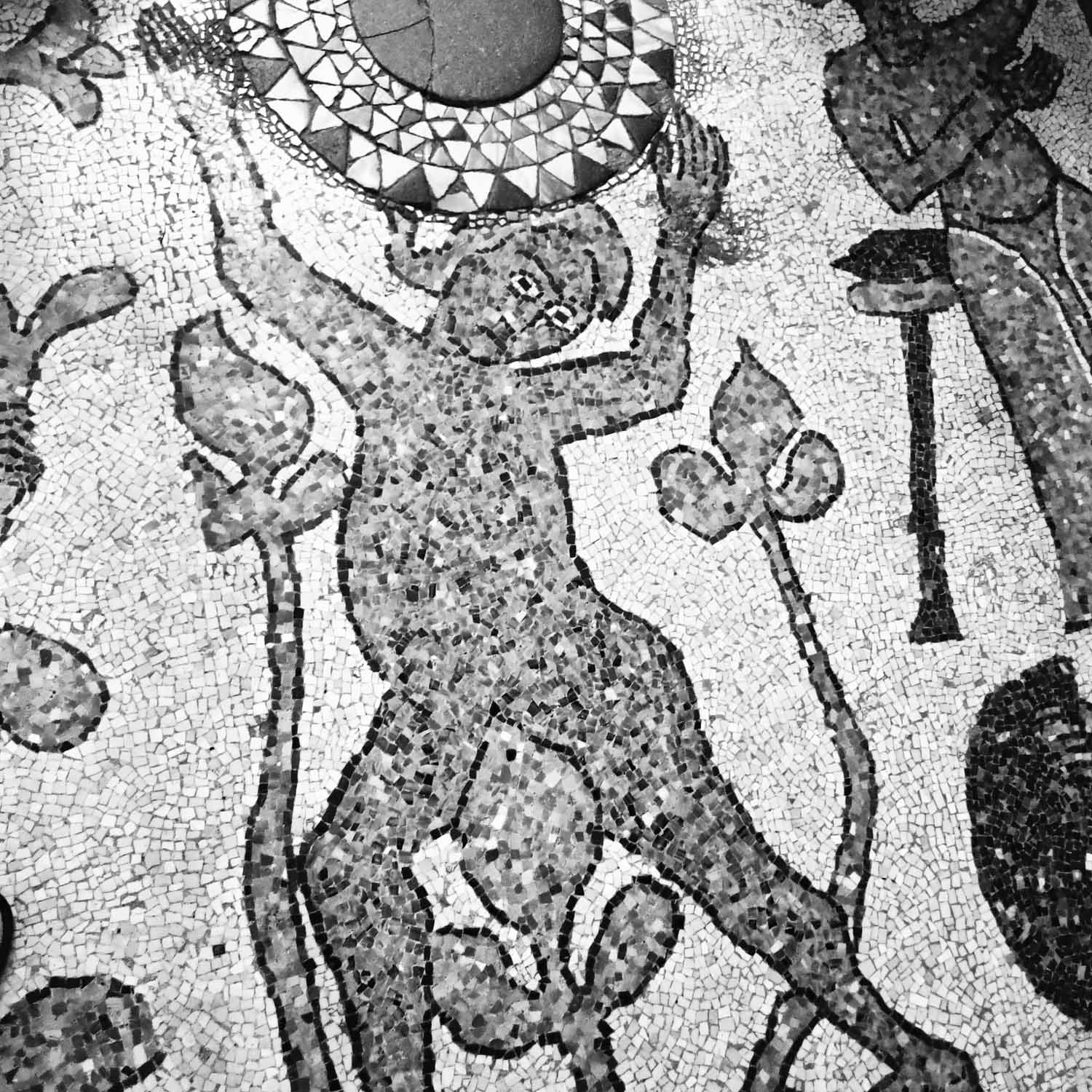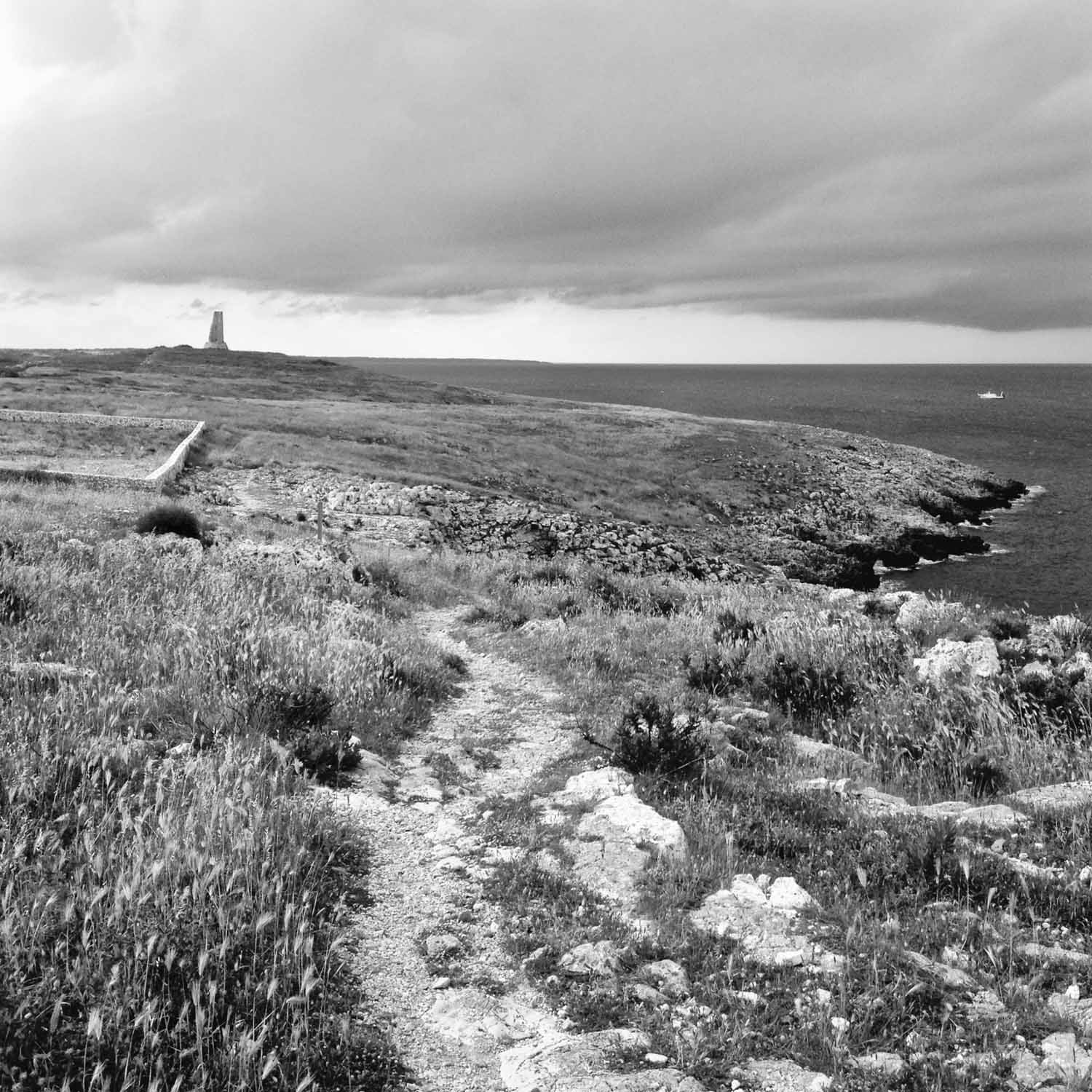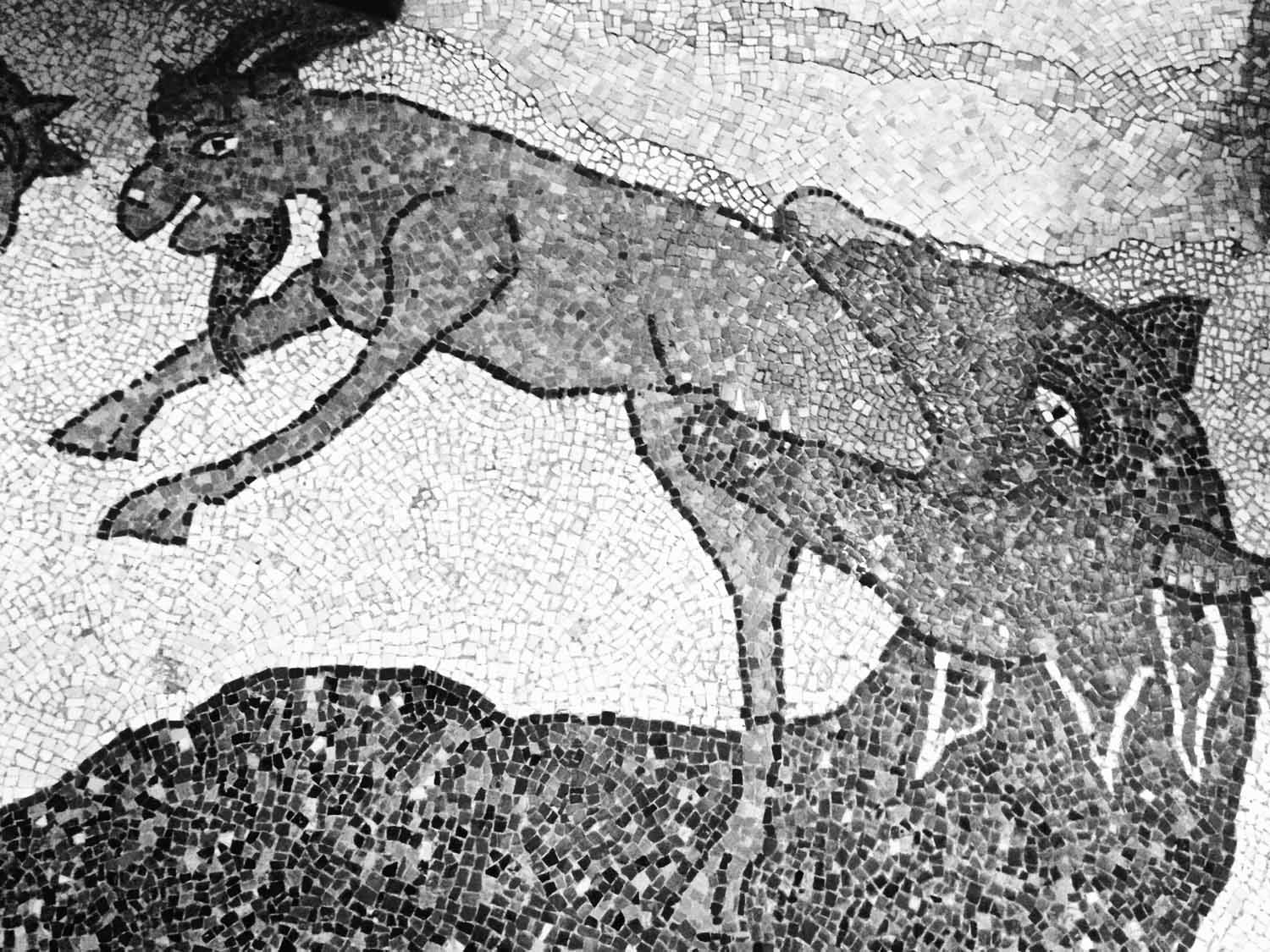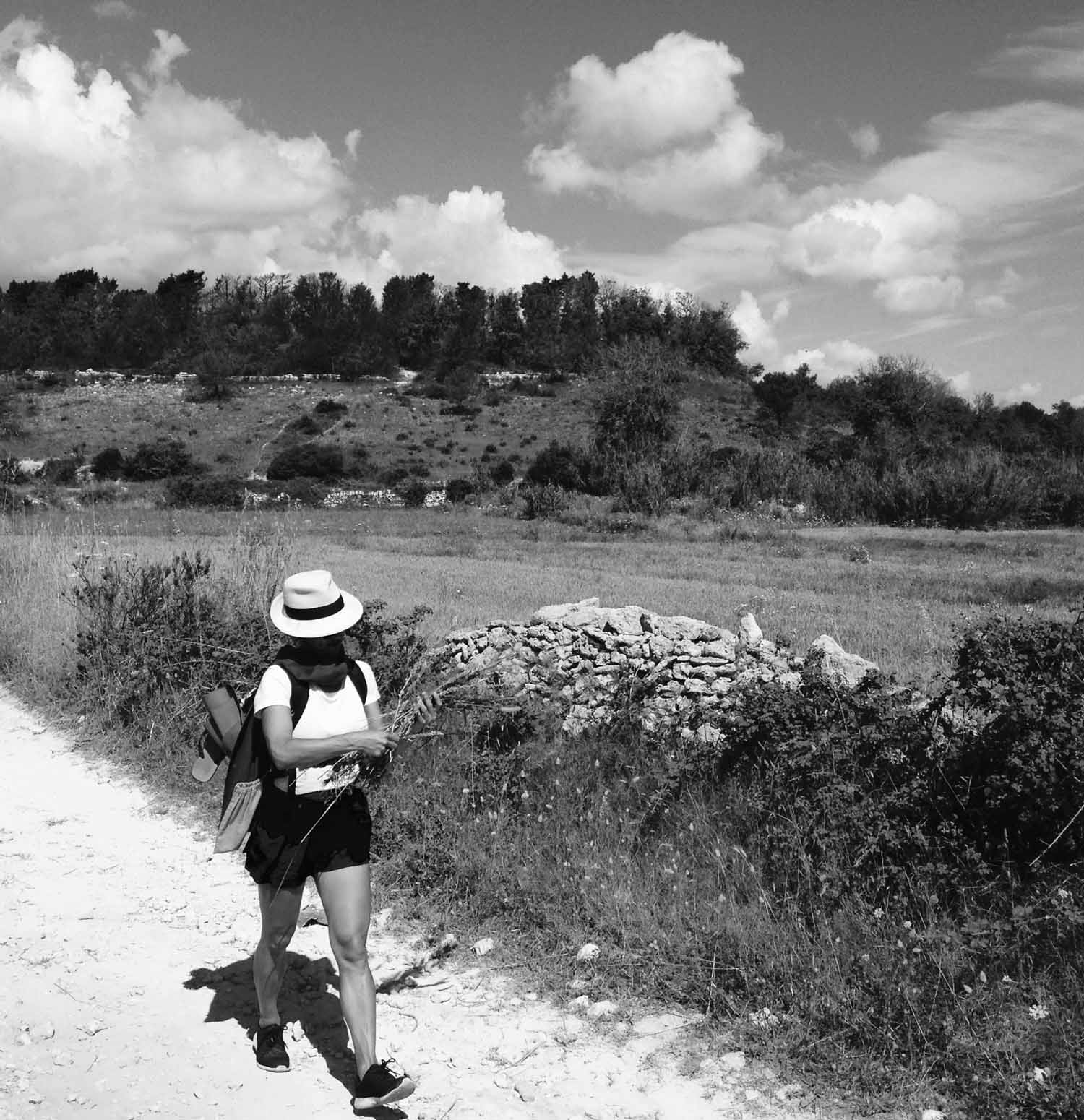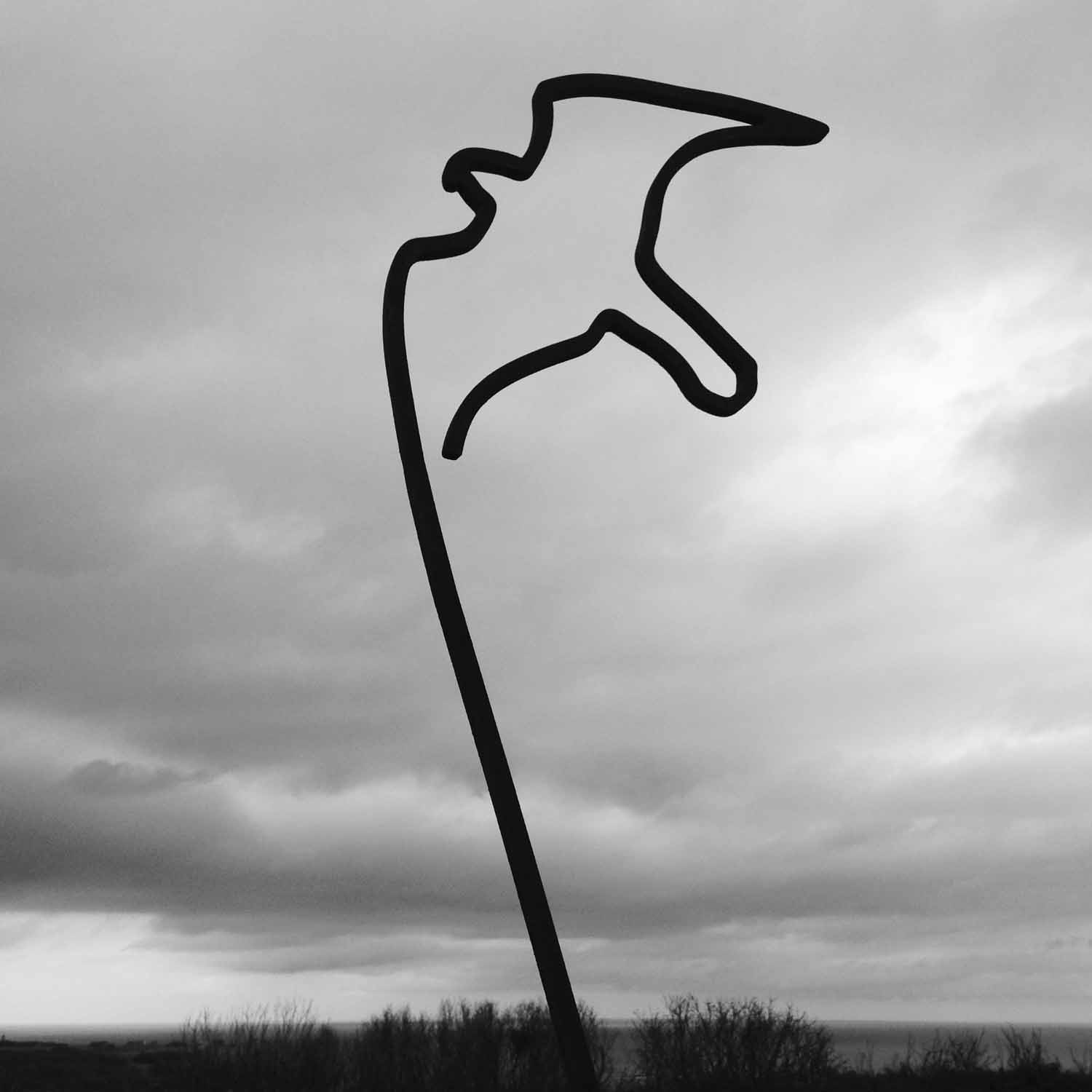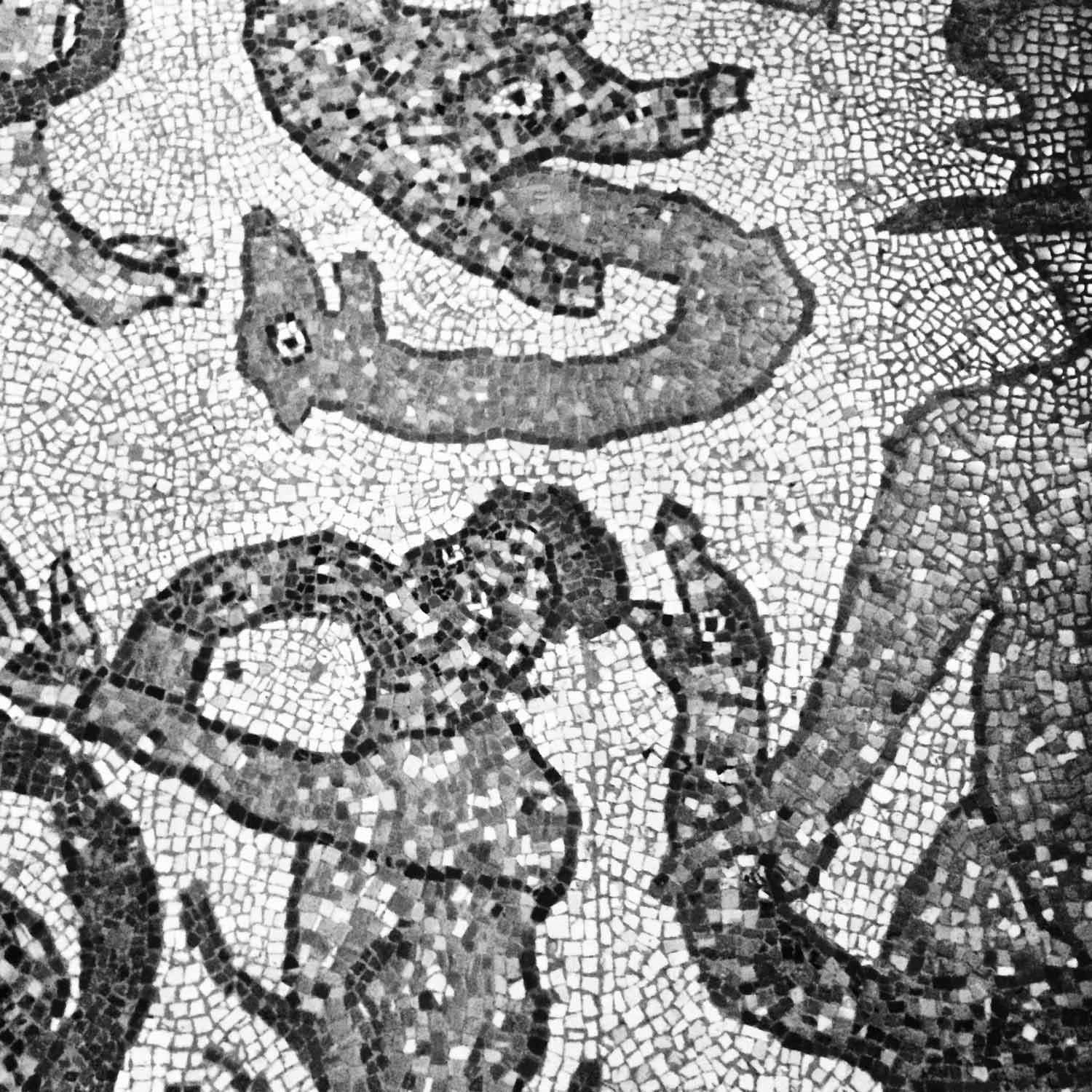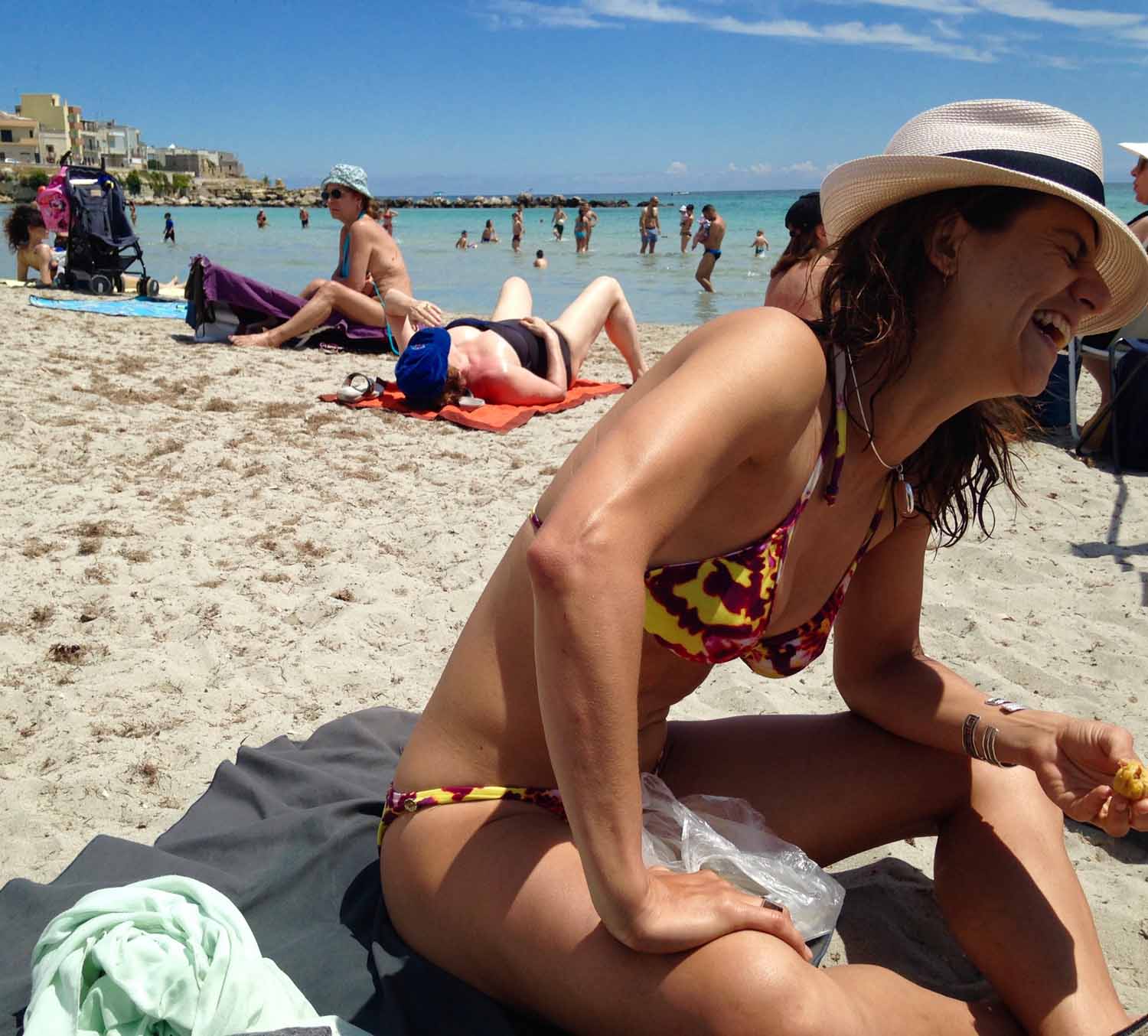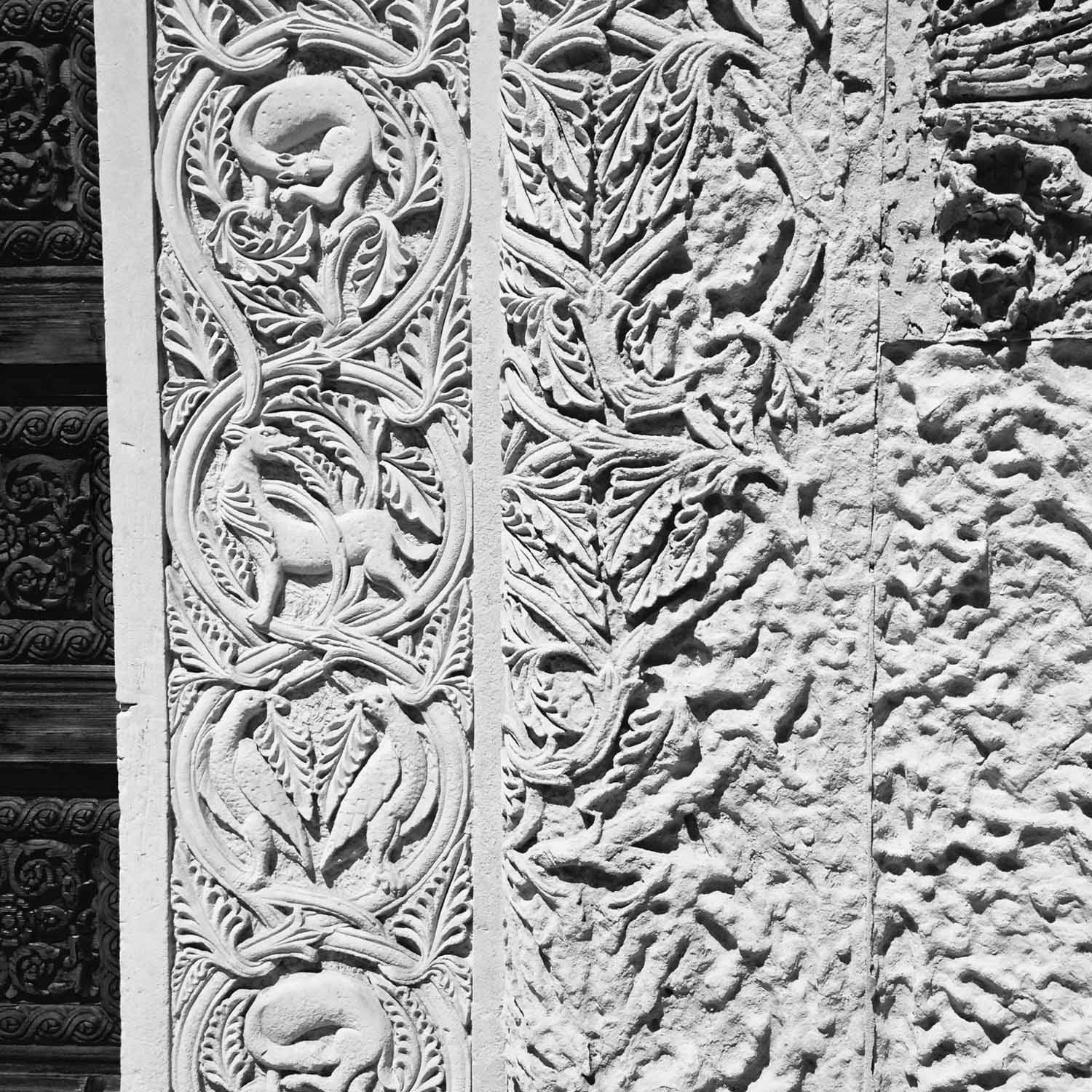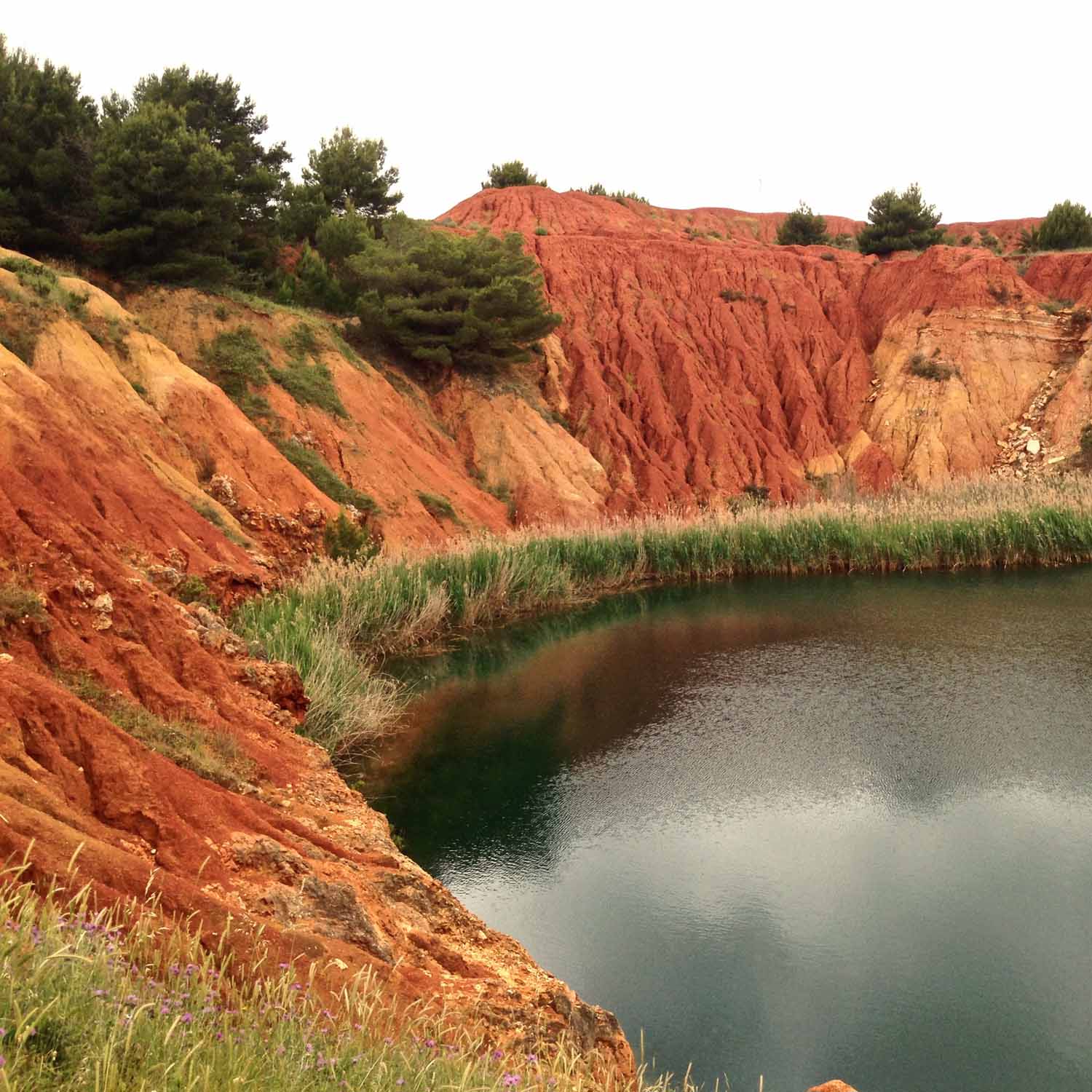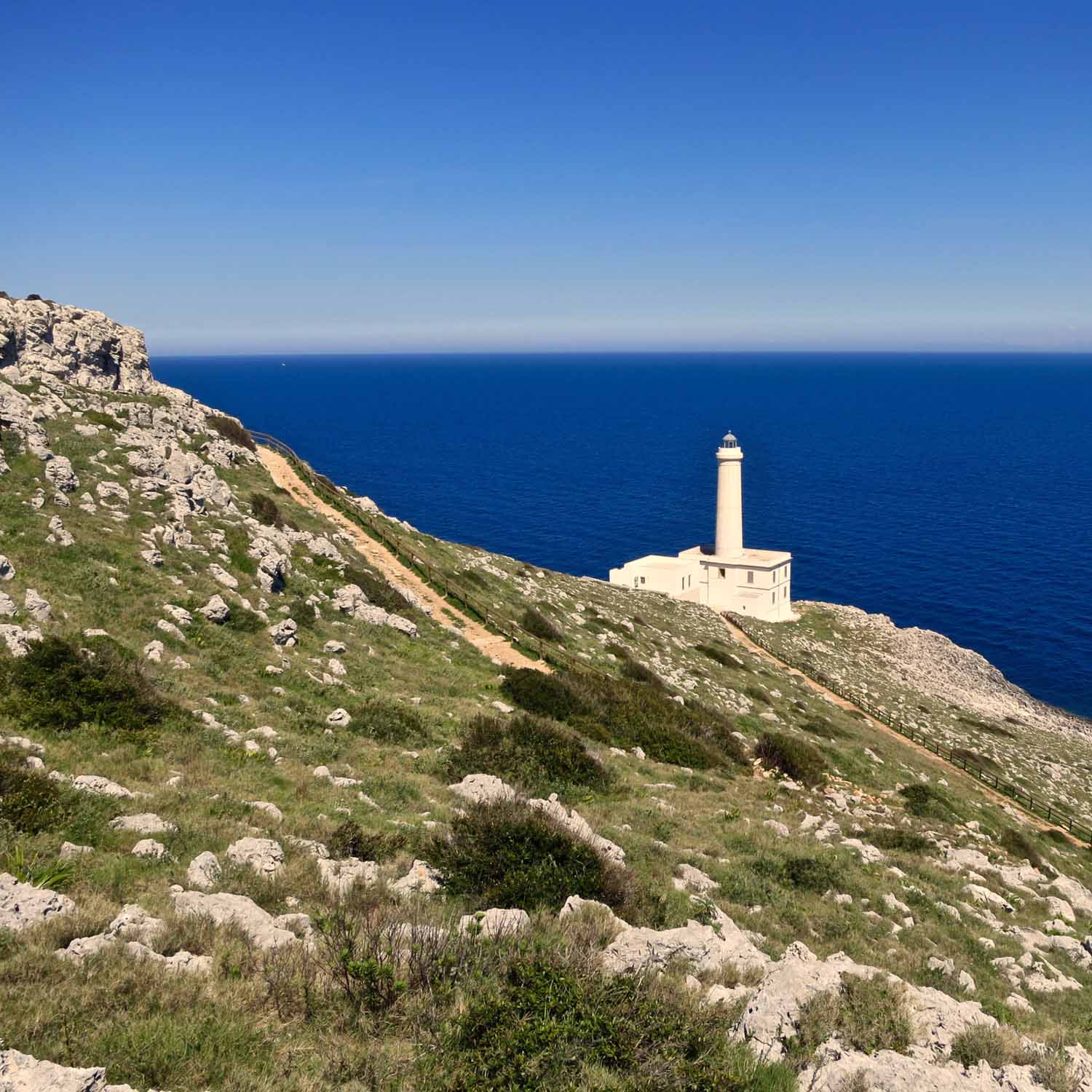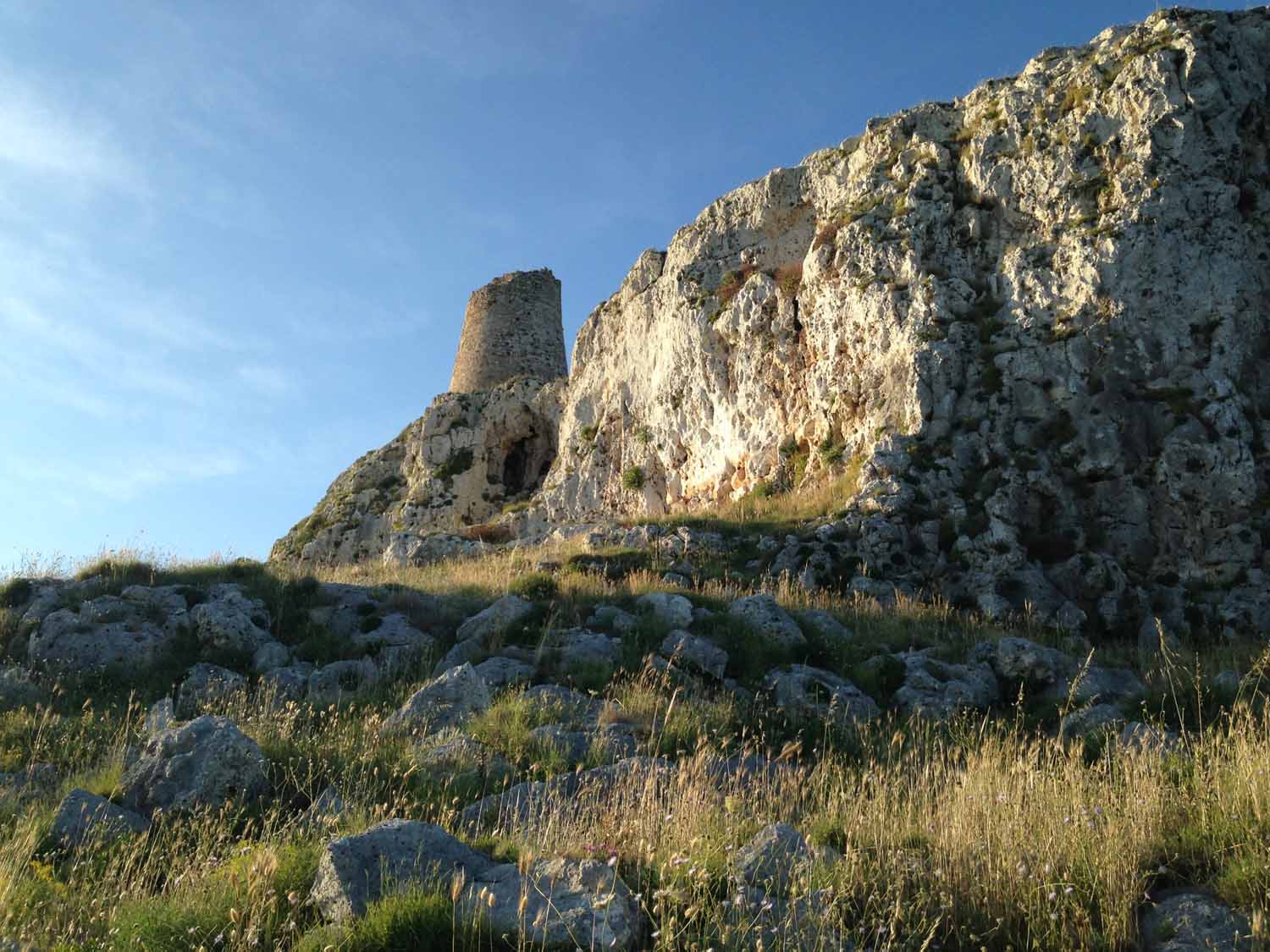To Land’s Eastern End [Day 4]
by Rudston Steward
e awoke to an easterly breeze, cool and lilting. I could smell the sea: Giurdignano is only 6km from the coast at Otranto. Today we would complete our Coast-to-Coast walk; today we’d be emissaries, arriving on foot from Gallipoli in the west, from the distant Ionian shores, to pay homage to the Adriatic Sea of the east.
We’d come bearing gifts, small invisible gifts encountered on our way across the Salentine isthmus: an olive leaf gathered, an insight honed, an experience grasped, layers of sweat and Puglian dust, new friendships forged. At Otranto we would finally dive into the Adriatic—a ritual bath of sorts, complementing our plunge into the Ionian two days earlier—and symbolically offer up these gifts to the sea. An invisible parcel, foot-delivered in person, surrendered to the Gods of the Open Road.
It’s easy to get carried away by symbolism and history around here: the mosaic pavement of Otranto’s cathedral is one of the great symbolic artworks of medieval Italy, a product of the singular historic era of Norman rule. The composition, laid out by a monk called Pantaleone between 1163 and 1165, covers the entire floor plan, and is based on a “Tree of Life” whose trunk rests on the backs of two elephants, its branches filled by an array of interconnected creatures, figures, and arcane images that unfurl all the way up the nave and into the transepts and apse. There are twelve circles depicting the astrological signs and agricultural tasks of each month, a series of Latin and Arabic inscriptions, a mermaid-dragon, a fantastical reindeer, heaven and hell, assorted mythological beasts and scenes from the scriptures, inscrutable pictographs, Alexander the Great, the Kings Solomon and Arthur. It’s as if Pantaleone were trying to encompass in a single design not only all of creation, but also the tropes and fancies hovering backstage on the fringes of the collective Medieval unconscious.
NOT ONLY ALL OF CREATION, BUT ALSO THE TROPES AND FANCIES HOVERING BACKSTAGE ON THE FRINGES OF THE COLLECTIVE MEDIEVAL UNCONSCIOUS.
The mosaic is a supreme expression of the syncretic and multicultural society that flourished in Southern Italy under the Norman kings in the twelfth and thirteenth centuries. King Roger II, crowned in 1130, was “one of the finest rulers of the Middle Ages…He refused to join the the Second Crusade because religious toleration was fundamental to his rule…Fluent in Greek and Arabic, he presided over the most intellectual and cosmopolitan court in Europe” (David Gilmour, The Pursuit of Italy). The Norman influence ended with the death of Emperor Frederick II in 1250, and with it died also the idea of uniting Italy under a single ruler—a concept that wouldn’t resurface until the unification of modern Italy six centuries later. For over 600 years the idea of “Italy” as a single entity simply evaporated from the popular imagination.
Otranto is thus a useful vantage point from which to look back over Italy’s past and consider how it set the scene for the infuriatingly fragmented and deadlocked Italian politics of the present. Gilmour’s summary is apt: “On the battlements of the Castle of Otranto you feel you are in the Balkans, and in a sense you are: you can see the mountains of Greece and Albania across the water; you are closer to Istanbul and the Ukraine than you are to Aosta; the Black Sea is nearer than the west coast of Sardinia. When Apulia joined the Kingdom of Italy in 1861, the new state’s capital was Turin, a city so far away that Otranto is today closer to seventeen foreign capitals than it is to Turin.”
It took us just under two hours to walk from Giurdignano to Otranto, initially along a narrow tarmac lane snaking its way across the last traces of the Amazonia of Olives. We crested a rise, the coast appearing in a sinuous line before and below us like the flank of a recumbent mermaid-dragon. After days spent walking uninterruptedly on the flat, summiting this meagre hillock-with-a-view felt like we’d scaled a crest of the Alps. The track looped over a low escarpment and dropped into the valley of the Idro River, and then we trailed along its bamboo’d banks, past the cave-church of Sant’Angelo, under the elevated highway, all the way on into Otranto and the Adriatic.
We arrived at the beach, unloaded our backpacks. Walked into the waves. Made our symbolic offerings to the sea. The water was of an uncanny temperature, it made flesh tingle and mind buzz.
THE WATER WAS OF AN UNCANNY TEMPERATURE, IT MADE FLESH TINGLE AND MIND BUZZ.
In the afternoon we walked on from Otranto to Porto Badisco. The Salento coast south of Otranto is a succession of low cliffs and ridges, capped by plateaux of grassland and thistly scrub. Geologically speaking it is karstic terrain, dotted with eroded limestone fissures and features. From Otranto’s port the path contoured around a headland, hugging the windswept coastline. We swished through blond grass and crunched over crumbling yellow limestone, past the crooked shell of a stone watch tower, the Torre del Serpe (Tower of the Snake.) And then inland, over the outlandishly vermillion crags and eroded folds of an abandoned bauxite mine. Mining ceased in 1976, and the pit has since filled with dark, emerald-fluorescent water, a decidedly psychedelic-looking pond—one that Pantaleone would no doubt have worked into the grand scheme of his cosmic mosaic.
The path climbed gradually from the bauxite mine up a wooded escarpment, thick with the vaguely aseptic scent of eucalyptus. At the top we emerged onto a tar road running along a barbed-wire fence. Large yellow signs loudly announced a “Zona Militare.” Smaller signs, quieter and more ominous, showed images of snipers taking aim at intruders. The road ran south-east straight along a cliff, and then made a sharp 90 degree turn and headed back inland, south-west. At the elbow a footpath continued on, a long zigzag sloping towards the sea. We followed the footpath down and around, and as we descended the lighthouse of Punta Palascìa emerged into view: Capo d’Otranto. The easternmost point of Italy.
We walked down to the lighthouse, to Land’s Eastern End. Across the sea the granite-grey peaks of the Ceraunian Mountains in Albania glimmered like monolithic tesserae. Further south, the Greek Island of Othoni was clearly visible, a smudge of purple shadow above the blue sheen of the sea, hovering like an exhalation.
Capo d’Otranto marks the point at which the southern Adriatic and northern Ionian Seas meet. As we walked on south from the lighthouse, along the coast down to Porto Badisco, we were technically once again walking along to the shores of the Ionian Sea. Our Puglian pilgrimage had come full circle, like a medieval serpent biting its own symbolic tail: from the Ionian at Gallipoli, to the Adriatic at Otranto, and now back to the Ionian at Porto Badisco. One isthmus, three seas: Salento coast-to-coast-to-coast.

